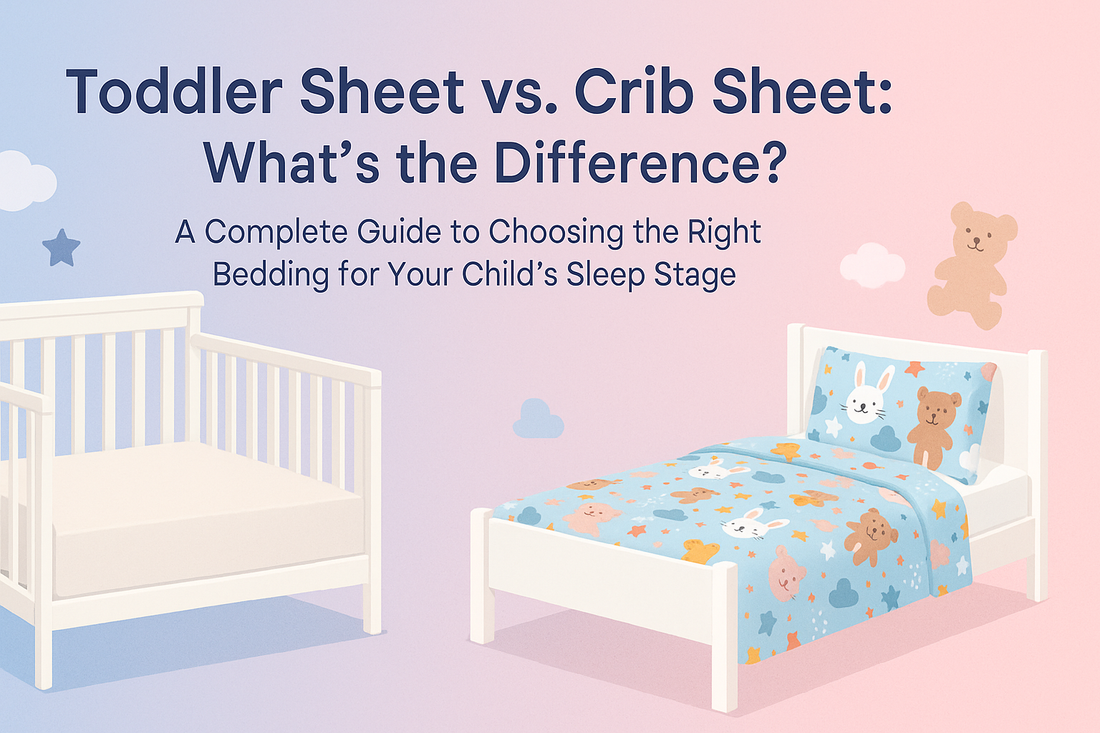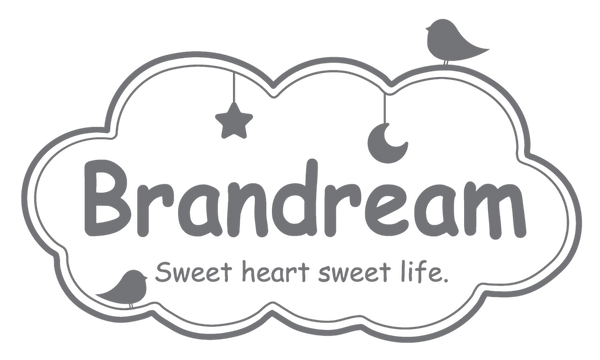Toddler Sheet vs. Crib Sheet: Is There a Difference?

As parents, we’re often inundated with choices—from diapers to bottles to bedding. Among these decisions is one that may seem trivial at first glance but actually plays a significant role in your child’s comfort and safety: choosing between a toddler sheet and a crib sheet. While they might seem interchangeable due to their similar appearance, there are subtle yet important differences between the two.
In this blog, we’ll explore the key distinctions between toddler sheets and crib sheets, how to choose the right one for your child, and why getting it right matters more than you think.
What Is a Crib Sheet?
A crib sheet is a fitted sheet designed specifically for standard crib mattresses, which are typically around 52 inches long and 28 inches wide with a thickness of about 5 to 6 inches. Crib sheets are usually the first type of sheet a baby uses, beginning from birth and extending into the infant stage.
They are engineered with safety as the highest priority, ensuring a snug fit around the mattress to prevent bunching, slipping, or loose fabric that could pose a suffocation risk to a newborn.
Key Features of a Crib Sheet:
-
Tight elastic fit to minimize movement
-
Made from soft, breathable materials like cotton or bamboo
-
Designed for standard crib mattress dimensions
-
Often paired with waterproof mattress protectors underneath
What Is a Toddler Sheet?
A toddler sheet typically refers to a sheet used on a toddler bed, which often uses the same size mattress as a crib mattress. However, toddler sheets are often part of bedding sets that include flat sheets, pillowcases, and comforters—elements not recommended for babies under 12 months due to safety concerns.
Although the mattress size might be the same, toddler bedding reflects the developmental stage of the child: more mobility, less risk of suffocation, and more preferences for softness, color, or character-themed prints.
Key Features of a Toddler Sheet:
-
May include fitted and flat sheets, plus pillowcases
-
More variety in designs and colors (think dinosaurs, unicorns, and favorite cartoon characters)
-
Typically softer and thicker fabrics for comfort
-
Matches toddler bedding sets for coordinated looks
Toddler Sheet vs. Crib Sheet: What's the Real Difference?
Here’s a breakdown of the major differences and considerations when comparing toddler sheets and crib sheets:
| Feature | Crib Sheet | Toddler Sheet |
|---|---|---|
| Purpose | Infant safety and comfort | Toddler independence and comfort |
| Fit | Snug, safety-focused | Similar fit but less stringent safety standards |
| Mattress Size | Fits standard crib mattress (52" x 28") | Also fits crib mattress, but may allow slightly more slack |
| Material | Often thinner, breathable for newborns | Thicker, softer, often with decorative prints |
| Includes | Usually just a fitted sheet | May include flat sheet, pillowcase, comforter |
| Safety Standards | Must meet strict infant safety standards | More relaxed for older children |
| Age Range | 0–12 months (or until child transitions) | 1–4 years (post-crib stage) |
Why the Difference Matters
1. Safety Concerns for Infants
Crib sheets are designed to reduce any potential hazards for infants, especially under 12 months old. Any loose bedding, including flat sheets or blankets, can pose suffocation or strangulation risks. That’s why crib sheets are exclusively fitted, tight, and made from breathable materials.
2. Comfort and Independence for Toddlers
By the time your child graduates to a toddler bed, they’ve gained more mobility and awareness. Toddler sheets offer more comfort and expression, allowing your little one to enjoy bedtime more with soft fabrics and fun themes that encourage a positive bedtime routine.
3. Developmental Transitions
The transition from crib to toddler bed typically happens between 18 months and 3 years old, depending on your child’s readiness. During this transition, bedding also changes. A toddler sheet set might help ease the transition by making bedtime feel new and exciting—just like their “big kid bed.”
Can You Use a Toddler Sheet on a Crib Mattress?
Technically, yes—but with important caveats. Since crib and toddler mattresses are usually the same size, a toddler fitted sheet will physically fit on a crib mattress. However, using toddler bedding in a crib is not recommended for infants.
If your child is still sleeping in a crib and under 12 months old, avoid using:
-
Flat sheets
-
Pillows
-
Comforters or duvets
-
Blankets
All of these can increase the risk of Sudden Infant Death Syndrome (SIDS). Stick with a tight-fitting crib sheet, and if extra warmth is needed, opt for a sleep sack or wearable blanket instead.
When Should You Make the Switch?
The switch from crib sheet to toddler sheet generally aligns with:
-
Switching to a toddler bed
-
Turning 18 months or older
-
Your child climbing out of the crib
-
Potty training starts (to help with bedwetting and sheet changes)
Some children move to toddler beds as early as 18 months, while others stay in the crib until 3 years old. Follow your child’s cues and readiness, and consult your pediatrician if you're unsure.
What to Look for in Either Type of Sheet
Whether you’re buying crib sheets or toddler sheets, look for these features:
-
OEKO-TEX® or GOTS certification – ensures materials are free from harmful chemicals
-
High thread count (200+) – for softness without sacrificing breathability
-
Machine washable & durable – because accidents happen
-
Deep pockets with strong elastic – prevents shifting during sleep
-
Breathable fabric – like organic cotton, bamboo, or muslin
Final Thoughts
So, is there a difference between toddler sheets and crib sheets?
Yes—but it’s more than just size. While they may technically fit the same mattress, they serve different functions for different stages in your child’s life. Crib sheets are about safety and minimalism; toddler sheets are about comfort, personality, and growing independence.
Making the right choice helps ensure your child is not only safe while they sleep, but also comfortable and excited for bedtime—which every parent knows is half the battle!
